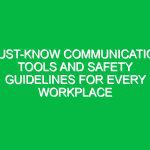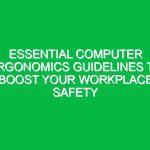Essential Guidelines for Safe Handling of Compressed Gas Cylinders
Compressed gas cylinders are crucial tools in various industries, including construction, manufacturing, and healthcare. However, when mishandled, they pose significant Hazards that can lead to serious injuries or accidents. Whether you are a seasoned professional or new to the workplace, understanding how to safely handle these cylinders is essential for ensuring a safe work Environment.
Understanding the Hazards of Compressed Gas Cylinders
Compressed gas cylinders can contain flammable, toxic, or inert gases under high pressure. If not handled correctly, these cylinders can rupture, explode, or leak, leading to potentially catastrophic results. For instance, a construction site worker might accidentally drop a poorly secured cylinder, causing it to become a projectile, which could injure nearby workers. Recognizing these hazards is the first step in preventing accidents.
Common Hazards
- Physical hazards: Cylinders can fall, roll, or be knocked over.
- Pressure hazards: A sudden release of pressure can cause injuries.
- Chemical hazards: Leaks can expose workers to toxic gases.
Have you ever witnessed an accident involving compressed gas cylinders? What measures do you think could have been taken to prevent it?
Best Practices for Storage and Handling
Proper storage and handling of compressed gas cylinders are critical for Workplace Safety. Cylinders should be stored upright and secured to prevent tipping. Additionally, they must be kept in a well-ventilated area away from heat sources and flammable materials. For example, in a warehouse setting, a worker should always use cylinder carts to transport gas cylinders rather than rolling them across the floor, as this can cause damage and increase the risk of an accident.
Safety Tips for Handling Cylinders
- Always inspect cylinders for damage before use.
- Use the proper regulator and connection for the specific gas type.
- Wear appropriate Personal Protective Equipment (PPE), such as Safety Goggles and gloves.
- Never attempt to repair a leaking cylinder yourself; report it immediately.
Have you checked your equipment today? What is the procedure for reporting damaged cylinders in your workplace?
Training and Compliance
All employees who handle compressed gas cylinders must receive proper Training to understand the associated risks and safe handling techniques. Training should cover the types of gases in use, appropriate PPE, and emergency Procedures. For instance, a manufacturing facility might conduct regular Safety drills to prepare employees for a gas leak, helping them to respond quickly and effectively if an incident occurs. Compliance with OSHA Regulations and industry Standards is vital to ensure Safety.
Creating a Culture of Safety
Encouraging a proactive safety culture can significantly reduce the risk of incidents involving compressed gas cylinders. Employees should be empowered to speak up about safety concerns and participate in safety meetings. For example, a team could implement a buddy system, where workers are paired to check each other’s safety practices when handling gas cylinders. This not only promotes accountability but also reinforces safe behaviors across the team.
What safety practices do you think should be emphasized in our next safety meeting? How can we encourage more participation in safety discussions?
Emergency Procedures and Response
In the event of an incident involving compressed gas cylinders, quick and decisive action is crucial. Employees should be familiar with the emergency response plan, including evacuation routes and the location of emergency equipment such as fire extinguishers and first aid kits. For instance, if a cylinder leaks toxic gas, immediate evacuation and notifying emergency services are essential steps to prevent exposure and harm.
Steps to Take in an Emergency
- Evacuate the area immediately.
- Notify your supervisor or safety officer.
- Do not attempt to fix the leak; leave it to trained professionals.
- Provide first aid to anyone affected if safe to do so.
Have you rehearsed the emergency procedures related to gas cylinder incidents? What would you do first if you encountered a leak?
Conclusion and Call to Action
Handling compressed gas cylinders safely is a shared responsibility that requires awareness, training, and adherence to safety protocols. By following the essential guidelines outlined in this Toolbox Talk, we can significantly reduce the risk of accidents and injuries in the workplace. Remember, safety starts with you—commit to applying these Safety Measures every day.
Let’s use this information as a discussion starter in our upcoming Toolbox Talks and safety meetings. Share your thoughts and experiences to foster a safer work environment for everyone!


